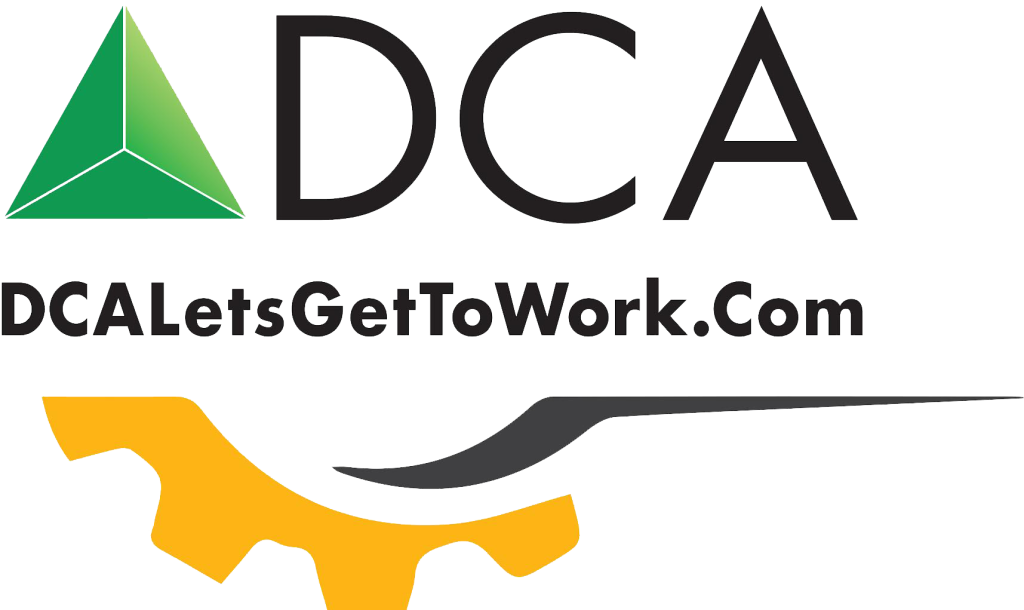- Home
- /Committees
DCA Working Committees

Participate with DCA Committees
DCA Changes the Structure of the Working Committees to Engage More Members
Whenever you attend a DCA meeting, one of the first things you notice is that the schedule is divided up mostly by a series of committee meetings. Many new members, along with others who don’t often get to attend, have questions about the committees – what are they, what do they do, who can be on them, how much work is involved? Understanding the committees is crucial for becoming a productive member, doing the work of the DCA, and moving up into leadership roles.
This article is your guide to the committees and how they work.
What are the Committees?
DCA uses what is known as the working committee structure to advance the strategic goals of the DCA and solve problems facing the natural gas distribution industry. The working committee structure allows the DCA to provide subject matter expertise, identify issues confronting the industry, and disseminate information to the association membership. The DCA Board of Directors, Leadership Council, or senior staff can propose a committee, provided there is a purpose for its existence and a written charter that includes goals and objectives.
Currently the DCA Board of Directors has seven chartered working committees:
Government Relations – This committee targets specific regulatory and legislative items and reports their findings through the Insights section of the DCA News and DCA websites. It presents to the Board of Directors those issues it believes our members would benefit from through advocacy for or against.
Trenchless & HDD – The purpose of the Trenchless & HDD Committee is to identify, discuss, and work toward resolutions of member issues and needs related to trenchless construction. It also promotes the use of trenchless technology to contractors, customers, and governing agencies through education and sharing safe, environmentally friendly, state of the art technology, and best practices for underground infrastructure installation worldwide.
Membership & Engagement – The mission of the Membership & Engagement Committee is to actively solicit and evaluate potential DCA contractor and associate members and make recommendations on member programs and awards. Additionally, it works to ensure new members are integrated into the association and getting value from their membership and attendance at the conferences.
Safety/Risk Management – The mission of this committee is to review safety related information provided by DCA members/associates and hold open discussions at meetings on safe jobsite practices. This committee oversees the Arthur T. Everham Safety Award and assists with the Safety Director and Safety Person of the Year Awards and the annual Safety Congress.
Workforce Development – This committee utilizes DCA resources, relationships, and membership to execute multiple initiatives that help promote, recruit, and retain the best possible talent for DCA contractor and associate members.
Innovation & Technology – This new committee is dedicated to fostering the integration and advancement of technology within the distribution contracting industry. The committee aims to explore, evaluate, and implement cutting-edge technologies to enhance efficiency, safety, and sustainability across our member organizations.
Future Leaders – The mission of the DCA Future Leaders Committee is to cultivate and engage a community of emerging leaders within the gas distribution industry. Through networking, outreach, and professional development opportunities, it aims to equip members with the skills and knowledge necessary to succeed in their current roles and advance their careers, as well as to advance the culture of the DCA. Interested members should be young professionals within their company that are committed to moving up in leadership positions within their employer and the DCA.
What are the committees?
DCA uses what is known as the working committee structure to advance the strategic goals of the DCA and solve problems facing the natural gas distribution industry. The working committee structure allows the DCA to provide subject matter expertise, identify issues confronting the industry, and disseminate information to the association membership. The DCA Board of Directors, Leadership Council, or senior staff can propose a committee, provided there is a purpose for its existence and a written charter that includes goals and objectives.
Currently the DCA Board of Directors has seven chartered working committees:
Government Relations – This committee targets specific regulatory and legislative items and reports their findings through the Insights section of the DCA News and DCA websites. It presents to the Board of Directors those issues it believes our members would benefit from through advocacy for or against.
Trenchless & HDD – The purpose of the Trenchless & HDD Committee is to identify, discuss, and work toward resolutions of member issues and needs related to trenchless construction. It also promotes the use of trenchless technology to contractors, customers, and governing agencies through education and sharing safe, environmentally friendly, state of the art technology, and best practices for underground infrastructure installation worldwide.
Membership & Engagement – The mission of the Membership & Engagement Committee is to actively solicit and evaluate potential DCA contractor and associate members and make recommendations on member programs and awards. Additionally, it works to ensure new members are integrated into the association and getting value from their membership and attendance at the conferences.
Safety/Risk Management – The mission of this committee is to review safety related information provided by DCA members/associates and hold open discussions at meetings on safe jobsite practices. This committee oversees the Arthur T. Everham Safety Award and assists with the Safety Director and Safety Person of the Year Awards and the annual Safety Congress.
Workforce Development – This committee utilizes DCA resources, relationships, and membership to execute multiple initiatives that help promote, recruit, and retain the best possible talent for DCA contractor and associate members.
Innovation & Technology – This new committee is dedicated to fostering the integration and advancement of technology within the distribution contracting industry. The committee aims to explore, evaluate, and implement cutting-edge technologies to enhance efficiency, safety, and sustainability across our member organizations.
Future Leaders – The mission of the DCA Future Leaders Committee is to cultivate and engage a community of emerging leaders within the gas distribution industry. Through networking, outreach, and professional development opportunities, it aims to equip members with the skills and knowledge necessary to succeed in their current roles and advance their careers, as well as to advance the culture of the DCA. Interested members should be young professionals within their company that are committed to moving up in leadership positions within their employer and the DCA.
What do the committees do?
DCA is restructuring its working committees, which are made up of members responsible for overseeing and participating in the activities associated with their specific committee on behalf of the organization. The committees meet regularly to identify and address key issues and concerns within their scope of responsibility. At the Mid-Year Meeting, Fall Meeting, and at least one virtual meeting, the committees engage in discussions with fellow members, industry speakers and experts to gain insight to help them make informed decisions. The committees will present a report to the general membership at the Annual Convention. The committee works diligently to ensure that all actions proposed align with DCA’s vision, mission, and strategic goals.
Each working committee may determine if a sub-committee is required to best address a given topic. Sub-committees may be composed of DCA members and are not restricted by number or company affiliation.
How are the committees organized?
Committee makeup – Each committee should have a broad representation of the DCA membership. Working committees should have a minimum of ten (10) and maximum of twenty (20) committee members. Ideally, each company should have only one representative on each committee, but no more than two are permitted. The committee member’s seat is based on the qualifications of the individual, not a representation of a company, i.e., it is John Doe of member company, not member company represented by John Doe.
The goal of each committee is to have an even balance between contractors and associates, with the exception of the Safety (majority of contractors) and Membership (majority of associates) committees.
Committee leadership – Each working committee has a Committee Chair (contractor member) and Co-Chair (associate member nominated and approved by the committee membership). There are two exceptions: the Safety & Risk Management chair and co-chair should both be contractor members, and the Membership & Engagement Committee chair and co-chairs should both be associate members.
All committee chairs serve for a three-year term.
The chairs appoint a secretary from the committee membership who will then be responsible for taking meeting minutes. The secretary can be either a contractor or associate and may be considered for a chair position upon the end of the chair’s term.
To broaden leadership opportunities within the DCA, Board members are not eligible to serve as working committee chairs. However, they may serve as a duly appointed member or non-voting advisor to the committees.
Committee leadership will update the Board of Directors during the Leadership Council Meeting at the Annual Convention and Mid-Year Meeting, describing current and future goals; purpose and impact of the goals for DCA, members, and/or the industry; and effectiveness of the goals.
DCA staff support – The DCA Executive Vice President designates a staff liaison for each committee. The staff liaison facilitates committee meetings, allocates DCA resources, and serves as the general business administrator for the committee.
How do you join a committee?
Annually, the chairs and DCA leadership will 1) gauge the interest of each member to renew membership for an additional term and 2) evaluate the participation and contribution quality of each member.
Timing of committee leadership and membership selection:
Mid Year – Request for interest in being on a committee, nominations to serve.
Fall Meeting – Selection to the committee.
Convention – Handoff to new leadership at the end of the committee meeting at the convention. Sitting chairs (not secretaries or elected future chairs) attend the Leadership Council Meeting and Leadership Lunch.
Members of a working committee service a 2-year term. Individuals may renew their membership for up to three (3) terms or six (6) years, including time served as a chair if applicable, after which they shall yield their seat to a new member.
When do the committees meet?
The working committees meet formally for 45 minutes to one hour at least four times per year—three in conjunction with the DCA meetings, plus at least one virtual meeting. A majority of sitting members of the committee, including the chairs, will constitute a quorum to make decisions. Committee members are expected to participate in at least 75% of the scheduled meetings, either in person or virtually.
The chairs should attend all committee meetings—particularly the Annual Convention—in order to ensure alignment with DCA priorities and attendance at the Leadership Council Meeting (in conjunction with the Board of Directors Meeting).
How much time do members spend working on committees?
In addition to attending the required three out of four annual committee meetings (totaling three to four hours), committee members can typically expect to spend around 10 additional hours per year working on committee projects and assignments such as creating new content/documents, attending events, and other volunteer work.
